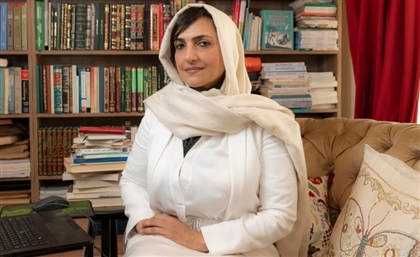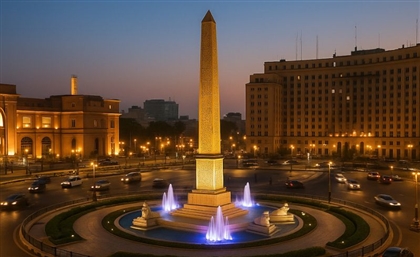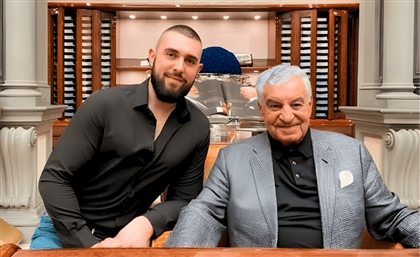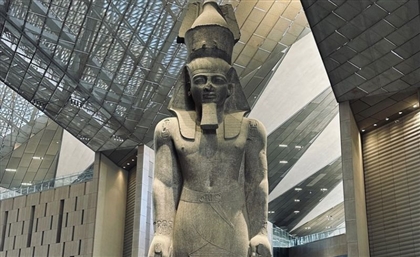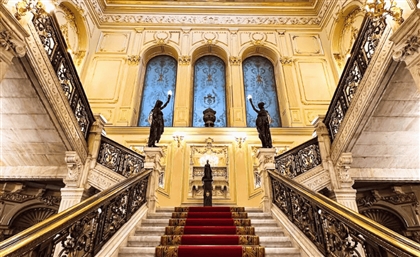Badawy Archive Makes Kom El Dikka Subject & Site in Street Exhibit
The exhibition is set in the street, on the route photographer Ahmed Badawy took through Kom El Dikka to work every day, from Sayed Darwish's childhood home to Studio Badawy.
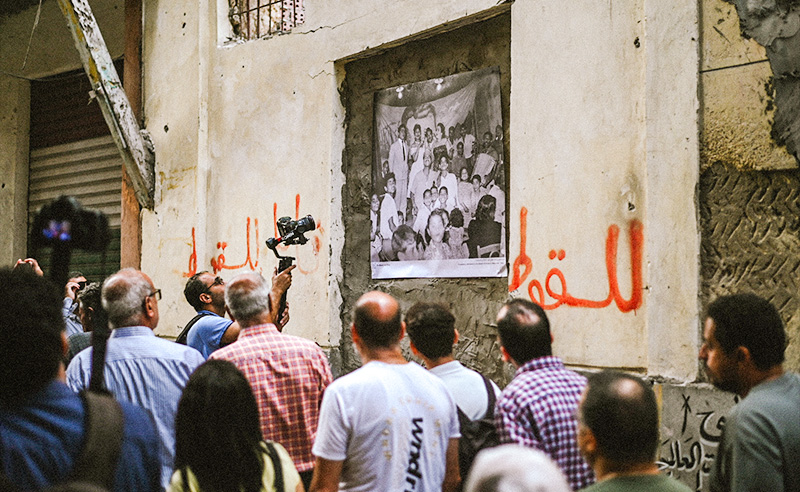
When the non-Alexandrian thinks about the city’s heritage, they often think about the Greek and Roman influences that gave it its name. The Bibliotheca Alexandrina, the Roman Colosseum, and the Graeco-Roman museums are cultural landmarks seen as representative of the city.
The neighbourhoods and who/what they birthed are often secondary. At the Alexandria Heritage Days festival, Badawy Archive, an Alexandria-based initiative archiving photographer Ahmed Badawy’s work, charts a forgotten history of the city through a series of recovered images and the streets in the images.
The exhibition, on display indefinitely, past the festival’s timeframe, is set in the streets of Kom El Dikka, where Badawy lived and worked, and also famously where the father of the popular song, Sayed Darwish, was from. Titled ‘Badawy From Kom El Dikka’, the exhibition follows Ahmed Badawy’s typical route through the neighbourhood to get to his studio, starting on the stairs to Sayed Darwish’s childhood home. It then moves through the neighbourhood, resting on people’s homes, mechanics’ workshops and local storefronts, until it reaches Badawy Studio.
“All of the images in the exhibition are from Kom El Dikka and surrounding areas,” Abdelaziz Badawy, one of the co-founders of Badawy Archive and Ahmed Badawy’s grandson, tells Cairo Scene, “Wedding photos, pictures of the neighbourhood, and even documentation of football matches played in the Alexandria International Sports Stadium, in Kom El Dikka.” The exhibition came to life with the help of people in the neighbourhood, the same way Badawy’s archive took form through their lives. “When we pitched the exhibition to people in the neighbourhood, they were incredibly excited to not only see it happen, but to play a part in putting it together. They wanted the images to be displayed on their homes and on their storefronts. They brought out pictures he had taken of them. ‘We were raised in that studio,’ they said, ‘He documented all of our memories.’ It got to a point where we didn’t need to bring tools with us, because the neighbours were always eager to help provide a missing hammer.”
Badawy Archive intend to keep the exhibition on display indefinitely, adding more images to the display when possible.
The exhibition came to life with the help of people in the neighbourhood, the same way Badawy’s archive took form through their lives. “When we pitched the exhibition to people in the neighbourhood, they were incredibly excited to not only see it happen, but to play a part in putting it together. They wanted the images to be displayed on their homes and on their storefronts. They brought out pictures he had taken of them. ‘We were raised in that studio,’ they said, ‘He documented all of our memories.’ It got to a point where we didn’t need to bring tools with us, because the neighbours were always eager to help provide a missing hammer.”
Badawy Archive intend to keep the exhibition on display indefinitely, adding more images to the display when possible.








